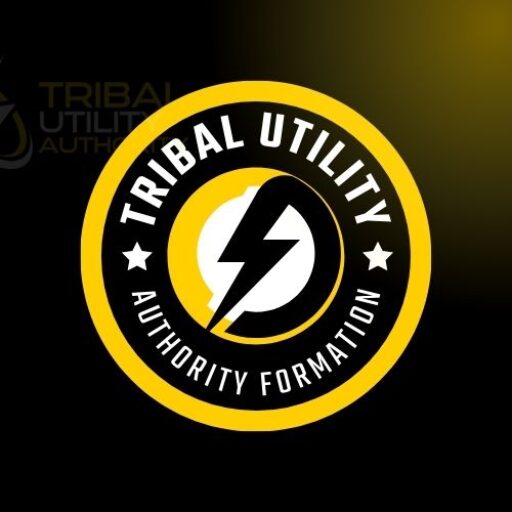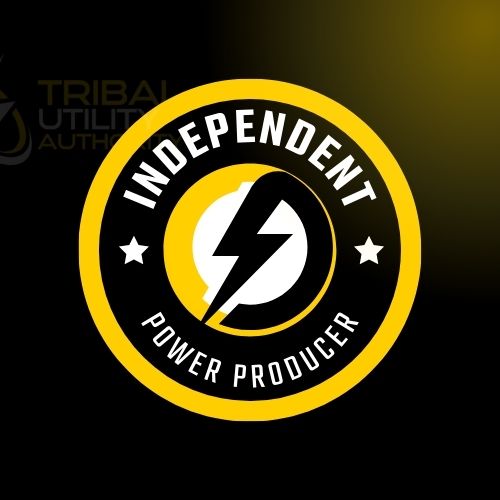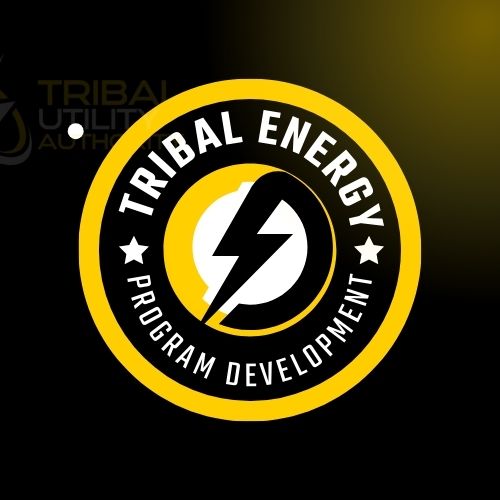Part II: The History of Tribal Utilities in Indian Country
Tribal Utility Authority | Powered By Red Power Energy
TUA Experts
+1 855-573-3769
Good >Better>Best Options
The History of Tribal Utilities in Indian Country
Long before the modern concept of utility services emerged, Native American tribes developed sophisticated systems for managing their resources. These traditional practices, passed down through generations, demonstrated a deep understanding of sustainable resource management that would later influence modern tribal utility operations. In many communities, complex water management systems supported agriculture and daily life, while careful stewardship of natural resources ensured their preservation for future generations.
The transformation from these traditional systems to modern utility operations spans centuries of change, adaptation, and ultimately, renewed self-determination. This journey begins with pre-colonial resource management practices, where tribes developed intricate systems for water distribution, waste management, and resource conservation. The Hohokam people of the Southwest, for instance, created extensive irrigation networks that sustained large communities in arid regions, demonstrating engineering expertise that would impress modern water utility managers.
The reservation era marked a significant shift in how tribal communities accessed and managed basic services. As tribes were confined to designated lands, traditional resource management systems were disrupted, and communities became increasingly dependent on federal government services. During this period, the Bureau of Indian Affairs (BIA) assumed primary responsibility for providing basic utilities to reservation communities, often with minimal tribal input or control. This arrangement, while ensuring some level of service, failed to address specific tribal needs or incorporate traditional knowledge into system design and operation.
The 1934 Indian Reorganization Act represented a crucial turning point, providing tribes with new opportunities to establish formal governance structures. This legislation laid the groundwork for future tribal utility authorities by recognizing tribes’ right to manage their internal affairs. However, the actual transition to tribal control of utilities would take several more decades and numerous legislative battles.
The post-World War II era brought significant changes to Indian Country’s infrastructure landscape. The 1950s and 1960s saw increased federal investment in reservation infrastructure through programs like the Indian Health Service’s Sanitation Facilities Construction Program. While these initiatives improved basic services, they still operated primarily under federal control, with tribes having limited say in system design or operation.
The true watershed moment for tribal utilities came with the self-determination movement of the 1970s. The Indian Self-Determination and Education Assistance Act of 1975 provided tribes with the authority to contract federal programs, including utility services. This legislation empowered tribes to take control of their utility operations, though the transition would prove challenging. Many tribes faced significant hurdles in assuming responsibility for systems that had suffered from years of deferred maintenance under federal management.
Early tribal utilities often started with water and sanitation services, as these represented the most pressing needs in many communities. The Navajo Tribal Utility Authority, established in 1959, pioneered the comprehensive tribal utility model, demonstrating that tribes could successfully manage complex utility operations. Their experience provided valuable lessons for other tribes considering similar initiatives.
The 1980s and 1990s brought new challenges and opportunities. Environmental regulations, including the Clean Water Act and Safe Drinking Water Act, imposed stricter requirements on utility operations. While these regulations improved service quality, they also increased operational complexity and costs. Tribes responded by developing more sophisticated management structures and seeking new funding sources to support compliance efforts.
The growth of tribal gaming operations in the 1990s created new opportunities for utility development. Gaming revenues provided some tribes with the financial resources to upgrade and expand their utility systems. This period also saw increased interest in renewable energy development, with tribes exploring wind, solar, and other alternative energy sources to reduce costs and promote sustainability.
The evolution of tribal utilities reflects broader changes in federal Indian policy and tribal governance. As federal policy shifted from paternalism toward self-determination, tribes increasingly asserted control over their essential services. This transition required developing new expertise, establishing regulatory frameworks, and building operational capacity within tribal communities.
Technological advancement has played a crucial role in this evolution. Early tribal utilities relied on basic mechanical systems and manual operations. Today’s tribal utility authorities utilize sophisticated SCADA systems, advanced metering infrastructure, and digital management tools. This technological progression has improved service delivery while creating new challenges in workforce development and system maintenance.
The development of inter-tribal organizations has supported this evolution. Groups like the Inter-Tribal Council of Arizona’s Tribal Water Systems program provide technical assistance and training to tribal utilities. These organizations help share best practices, coordinate resources, and advocate for tribal interests in regulatory and policy discussions.
KEEP READING BELOW
WIDE RANGE OF TRIBAL UTILITY SERVICES
Do you need Tribal Solar Help ? Look no further!
Leading experts in Tribal Utility Authority formation, IPP development, and PPA negotiation. Transform your tribe's energy infrastructure with comprehensive solutions backed by decades of experience in Indian Country.
- Tribal Utility Authority Formation
- Independent Power Producer Development
- Power Purchase Agreement Negotiation
- Virtual Tribal Energy Office Implementation
- Energy Program Management




Federal funding mechanisms have also evolved significantly. Early tribal utilities relied primarily on BIA and IHS funding. Today, tribes access diverse funding sources, including EPA grants, USDA rural development programs, and private financing. This diversification of funding sources has provided greater flexibility in system development while requiring more sophisticated financial management capabilities.
Climate change has emerged as a significant concern for tribal utilities, particularly those managing water resources. Historical approaches to system design and operation often assumed stable environmental conditions. Modern tribal utilities must plan for increased climate variability, extreme weather events, and changing resource availability. This challenge has prompted many tribes to incorporate traditional ecological knowledge into their adaptation strategies.
The relationship between tribal utilities and neighboring non-tribal systems has also evolved. Early tribal utilities often operated in isolation, with limited connection to surrounding systems. Modern tribal utilities frequently engage in regional planning efforts, establish interconnection agreements, and participate in mutual aid networks. These partnerships enhance service reliability while preserving tribal sovereignty over utility operations.
Workforce development represents another crucial aspect of tribal utility history. Early operations often relied heavily on non-tribal technical expertise. Over time, tribes have developed training programs and career pathways to build internal capacity. Many modern tribal utilities maintain apprenticeship programs and partnerships with tribal colleges to develop skilled tribal members for utility careers.
The story of tribal utilities includes significant legal precedents that have shaped their development. Court decisions regarding tribal water rights, regulatory authority, and jurisdiction have influenced how tribal utilities operate and interact with other entities. These legal frameworks continue to evolve as tribes assert their rights and authorities in utility management.
Looking toward the future, tribal utilities face both challenges and opportunities. Aging infrastructure, climate change impacts, and evolving regulatory requirements demand continued adaptation and investment. However, new technologies, funding sources, and management approaches provide tools for addressing these challenges while maintaining cultural connections and promoting tribal self-determination.
The history of tribal utilities demonstrates the resilience and adaptability of tribal communities in meeting their essential service needs. From traditional resource management practices to modern utility operations, tribes have consistently found ways to provide for their communities while preserving cultural values and promoting sustainable development. This history provides valuable lessons for current utility managers while highlighting the importance of maintaining strong connections between traditional knowledge and modern utility operations.
Understanding this history helps current tribal utility managers appreciate the context of their operations while providing insights for future development. The challenges faced and overcome by early tribal utilities offer valuable lessons for today’s operators, while the ongoing evolution of tribal utility management suggests exciting possibilities for future development.
This rich history continues to influence modern tribal utility operations, demonstrating the importance of balancing traditional values with contemporary service requirements. As tribal utilities continue to evolve, they build upon this foundation while adapting to new challenges and opportunities in service delivery and resource management.
Experienced Tribal Solar Experts
WE USE THE LATEST TOOLS & TECHNOLOGY
We provide reliable and quality electrical services to customers in the area. We specialize in all aspects of residential and commercial electrical work, from new installations and upgrades to repairs and maintenance.
We are a full-service electrical contractor dedicated to providing quality electrical services to both residential and commercial customers. Our team of experienced electricians are highly trained and certified.
TRIBAL UTILITY AUTHORITY CONSULTING
Expert guidance in establishing and managing tribal utility authorities, helping Native American communities achieve energy sovereignty through strategic planning and implementation.
TRIBAL UTILITY PROGRAMS
Comprehensive support for developing and implementing sustainable tribal utility programs that enhance community self-reliance and economic development.
TRIBAL UTILITY AUTHORITY FORMATION
Complete assistance in establishing legally sound tribal utility authorities, including regulatory compliance, governance structure development, and operational framework creation.
TRIBAL UTILITY AUTHORITY OPERATIONS
Professional support for day-to-day utility management, including system maintenance, customer service, billing operations, and performance optimization.
TRIBAL UTILITY AUTHORITY TECHNOLOGY
State-of-the-art technological solutions for modern tribal utility operations, featuring advanced metering, smart grid capabilities, and integrated management systems.
TRIBAL UTILITY AUTHORITY WORKFORCE
Specialized workforce development programs focused on building local capacity through technical training, professional development, and ongoing operational support.
Are you in need of an Tribal Utility Authority Expert ?
Look no further! Our team is here to help.
REACH OUT AND CONNECT
Get a Complete Quote
Your bridge to meaningful communication and personalized assistance, we're here to listen and assist you
Latest Tribal Utility Authority Updates
NAVIGATING IDEAS AND INSPIRATION

Tribal Utility Authority Overview
A tribal utility authority is a specialized administrative entity established by a Native American tribe to manage and operate essential utility services within their tribal

Tribal Utility Authority Formation: Harnessing Tribal Energy Sovereignty
Tribal Utility Authority Formation: Harnessing Tribal Energy Sovereignty Welcome to TribalUtilityAuthority.com, the definitive resource on establishing and operating Tribal Utility Authorities (TUAs) to achieve energy




